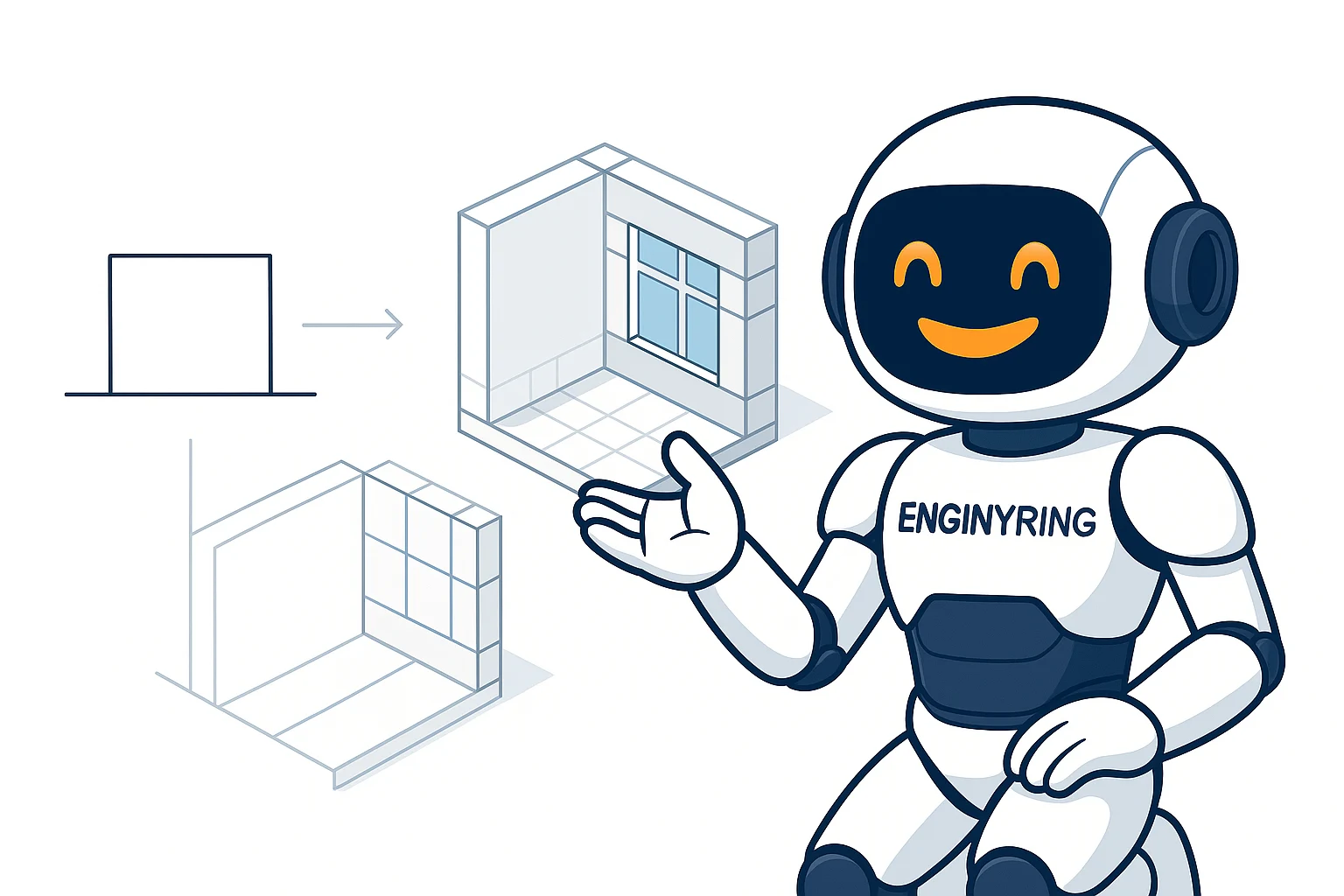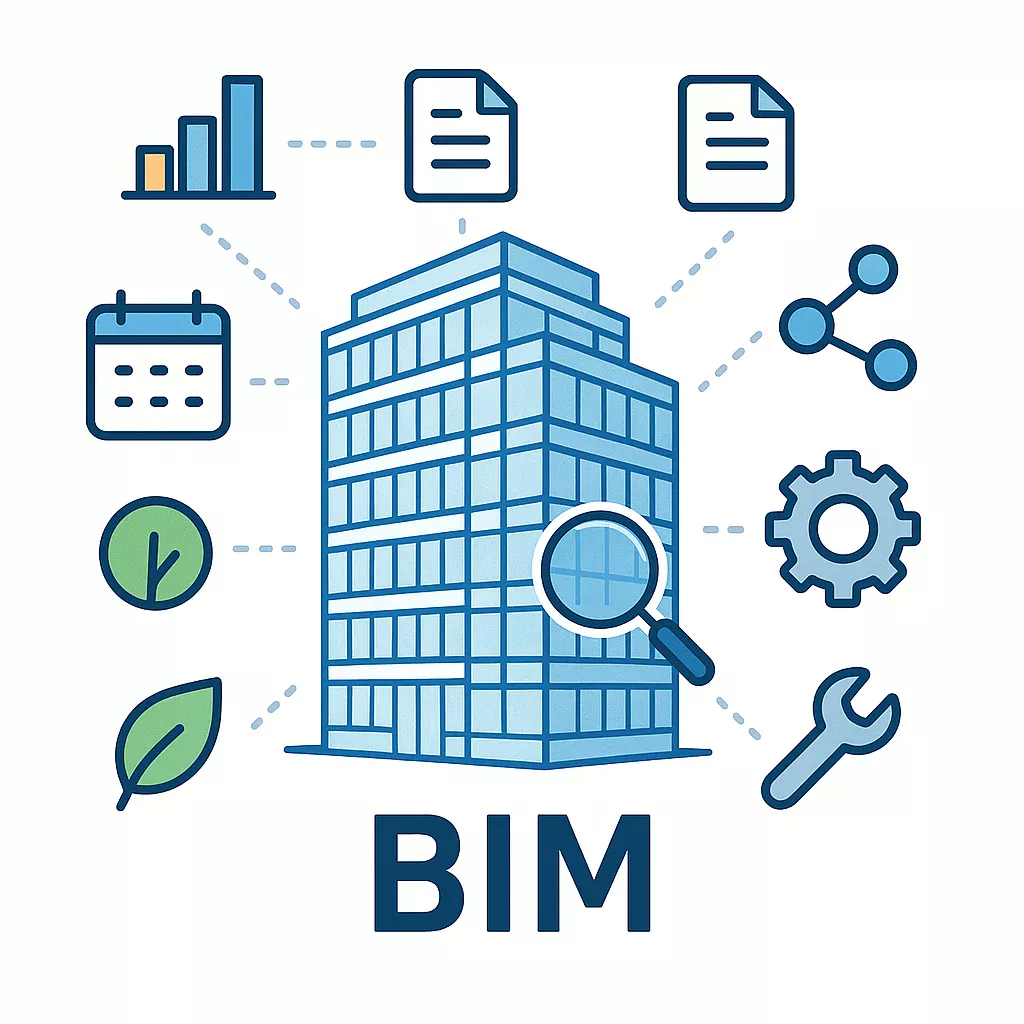
The True Cost of Inaccuracy: Why Expert Topographical Data Processing is a Project Saver, Not an Expense
In the high-stakes world of construction, land development, and infrastructure projects, every decision carries significant financial and logistical weight. Timelines are tight, budgets are meticulously planned, and safety is paramount. In this complex environment, the foundational understanding of a project site—its topography—is often underestimated in terms of its potential impact on the bottom line. While raw topographical data can be acquired through various means like ground surveys or aerial scans, its true value is only unlocked through expert processing and interpretation. Seemingly minor inaccuracies or misinterpretations of this data can trigger a cascade of costly problems downstream. Conversely, investing in professional, meticulous processing of topographical data is not merely an operational expense; it's a critical strategic investment in risk mitigation, efficiency, and ultimately, overall project profitability. At ENGINYRING, we specialize in transforming raw topographical data, provided by our clients from their survey or scanning activities, into highly accurate and reliable digital deliverables—such as Digital Terrain Models (DTMs), precise contour maps, and detailed 2D site plans—that form the bedrock for sound, cost-effective decision-making throughout a project's lifecycle.
Understanding Topography: More Than Just "Hills and Valleys"
Before delving into the costs of inaccuracy, it's essential to appreciate what topography encompasses. Topography describes the three-dimensional shape of the land's surface, detailing its natural and man-made features, including elevations, contours (lines of equal elevation), slopes, and the location of elements like water bodies, vegetation, roads, and existing structures. This detailed understanding of the terrain is fundamental for an astonishingly broad array of projects. As highlighted in many expert analyses, including insights similar to those found on resources like SpatialPost, accurate topographical information is indispensable for:
- Urban Planning and Development: Informing zoning, land use planning, infrastructure layout (roads, utilities), assessing suitability for different types of development, and managing urban growth sustainably.
- Infrastructure Projects: Designing roads, railways, bridges, tunnels, pipelines, and utility corridors requires precise knowledge of terrain to optimize routes, minimize earthwork, ensure stability, and manage drainage.
- Land Development and Construction: Determining optimal building placement, designing foundations, planning site grading and drainage, calculating cut-and-fill volumes, and ensuring safe access and construction logistics.
- Environmental Management: Understanding watershed areas, modeling flood risks, planning erosion control measures, managing pollution dispersion, and protecting sensitive habitats all rely on accurate topographical data.
- Agriculture and Forestry: Optimizing irrigation systems, planning soil conservation strategies, managing forest resources, and assessing land capability.
- Resource Extraction: Planning and managing mining or quarrying operations, including volume calculations and site reclamation.
- Natural Disaster Management: Assessing risks from landslides, floods, or earthquakes, planning evacuation routes, and coordinating emergency response.
The common thread across all these applications is that the *effectiveness and safety* of any plan or design are directly proportional to the *accuracy and reliability of the underlying topographical data representation*. Raw data alone is often insufficient; it requires expert processing to become truly usable intelligence.
The Hidden Cascade: How Inaccurate Topographical Data Derails Projects and Inflates Costs
When topographical data is flawed—either due to errors in initial acquisition (which is outside ENGINYRING's direct control, as we work with client-provided data) or, critically, due to improper or incomplete processing of that raw data—the consequences can be severe and far-reaching, creating a domino effect of problems and escalating costs throughout the project lifecycle. It's crucial for project stakeholders to understand these potential financial pitfalls.
A. Flawed Design Decisions Based on Erroneous Site Understanding
The design phase is where the first seeds of costly errors are sown if based on inaccurate topography. Imagine an architect designing a building based on a site plan where elevations are off by even a small margin, or where slopes are misrepresented.
- Incorrect Building Placement & Orientation: This can lead to unforeseen excavation challenges, the need for more extensive (and expensive) foundation solutions than anticipated, compromised views, suboptimal solar orientation (affecting energy costs), or even encroachment on restricted areas.
- Miscalculated Gradients for Infrastructure: For roads, railways, or pipelines, incorrect gradient information can render a design unconstructible, inefficient, or non-compliant with safety standards. This often necessitates significant redesign efforts.
- Unrealistic Earthwork Estimations: Cut-and-fill calculations are highly sensitive to topographical accuracy. If the existing terrain model is incorrect, initial estimates for earthmoving can be wildly off, leading to unexpected budget blowouts for excavation or fill material procurement.
- Inefficient Site Layout: Poor understanding of the site's actual contours can result in inefficient layouts for access roads, parking areas, material storage, and temporary facilities, impacting site logistics and potentially increasing operational time and costs during construction.
Financial Impact: The direct costs include fees for redesign and re-planning. Indirect costs arise from project delays incurred during these redesigns and the potential for suboptimal long-term performance of the designed asset due to compromises made to accommodate the actual site conditions discovered later.
B. Construction Phase Nightmares Stemming from Inaccurate Plans
Errors originating from poorly processed topographical data often become painfully apparent during the construction phase, where physical work meets digital plans.
- Excavation and Grading Errors: Contractors relying on flawed site plans may excavate too much material (incurring disposal costs and potentially requiring engineered fill) or too little (requiring additional excavation and causing delays). Incorrect grading can lead to improper site drainage.
- Foundation Issues: Discovering that the ground conditions or elevations at foundation locations differ from the plans can halt construction and necessitate urgent geotechnical investigations and foundation redesigns, which are invariably expensive and time-consuming.
- Drainage System Failures: If slopes are not accurately represented in the design documents (which are based on processed topographical data), installed drainage systems (stormwater, sewer) may not function correctly, leading to pooling, flooding, or the need for complete system rework.
- Clashes with Unmapped Features or Utilities: While utility locating services are separate, accurate topographical mapping of visible surface features and known utility corridors is vital. Errors can lead to striking unmapped utilities or encountering unexpected terrain obstacles.
- Material Wastage and Shortages: Incorrect quantity take-offs for site-specific materials (e.g., gravel for sub-base, topsoil) based on flawed site models lead to either over-ordering and wastage or under-ordering and costly, urgent procurement leading to delays.
Financial Impact: This is where costs escalate rapidly – direct expenses for rework, additional materials, idle equipment and labor during delays, and potential liquidated damages for not meeting project milestones.
C. Safety Hazards and Regulatory Non-Compliance
The safety of personnel and the public, as well as adherence to legal requirements, can be compromised by inaccurate topographical understanding.
- Unidentified Hazards: Inaccurately mapped steep slopes, unstable ground indicators, or proximity to water bodies can lead to inadequate safety planning, potentially resulting in accidents, landslides, or equipment damage.
- Non-Compliance with Regulations: Designs based on flawed topography might inadvertently violate zoning laws (e.g., height restrictions relative to surrounding terrain), environmental regulations (e.g., disturbing protected slopes or watercourses), or accessibility standards (e.g., ramp gradients).
Financial Impact: Potential for fines, legal liabilities, project shutdowns ordered by authorities, costly remedial work to achieve compliance, and significant reputational damage to all parties involved.
D. Long-Term Operational and Maintenance Burdens
The consequences of poor topographical data processing extend far beyond project completion, affecting the operational life and maintenance costs of the asset.
- Chronic Drainage and Water Damage Issues: Improper site grading due to initial inaccuracies can lead to persistent water pooling around foundations, landscape erosion, or even structural damage over time, requiring ongoing costly maintenance.
- Unexpected Settlement or Erosion: If soil conditions related to specific topographical features were not accurately understood and accounted for, unexpected settlement or erosion can occur, jeopardizing the structure or requiring expensive repairs.
- Complications in Future Developments: An unreliable as-built record of the site topography makes future expansions, modifications, or adjacent developments much more complex and risky to plan.
Financial Impact: Significantly increased operational and maintenance expenditures over the asset's lifespan, reduced asset value, and potentially higher insurance premiums.
E. Disputes, Claims, and Legal Complications
When discrepancies arise between what was designed (based on allegedly accurate topographical data) and what is encountered or built on site, disputes are almost inevitable.
- Contractual Disagreements: Contractors may claim for additional costs and time extensions due to encountering site conditions significantly different from those indicated in the tender documents (which include drawings derived from topographical data).
- Liability Issues: Determining responsibility for errors stemming from inaccurate site data can lead to complex legal battles between owners, designers, surveyors (if their raw data was problematic), and data processors (if the processing was flawed).
Financial Impact: Substantial legal fees, costs of arbitration or litigation, project delays due to disputes, and irreparable damage to professional relationships and reputations.
The Value of Precision: How Expert Topographical Data Processing by ENGINYRING Mitigates Risks and Saves Costs
The solution to avoiding this cascade of costly problems lies in ensuring the absolute accuracy and reliability of the topographical information used for design and construction. This is achieved through meticulous, expert processing of the raw topographical data provided by clients. At ENGINYRING, we specialize in this critical transformation.
A. Transforming Raw Data into Reliable Digital Intelligence
Clients provide us with raw topographical data, which can be in various formats: traditional survey field notes, digital files from total stations or GPS equipment, or increasingly, point cloud data from terrestrial or aerial LiDAR scans representing the terrain. Our process involves:
- Data Validation and Verification: We first assess the provided raw data for completeness, consistency, and potential gross errors. This initial check is crucial.
- Coordinate System Transformation and Georeferencing: We ensure all data is accurately georeferenced to the required project coordinate system and vertical datum, guaranteeing spatial accuracy and compatibility with other project data.
- Point Cloud Processing (if applicable): For terrain scan data, this involves noise filtering (removing points not representing the actual ground, such as vegetation or atmospheric interference), data classification (differentiating ground points from non-ground points), and ground point extraction to create a bare-earth model.
- Creation of Accurate Surface Models: From the validated and cleaned survey points or processed ground points from scans, we generate precise Digital Terrain Models (DTMs), Digital Elevation Models (DEMs), or Triangulated Irregular Networks (TINs). These models accurately represent the three-dimensional surface of the site.
- Generation of Precise Contour Lines: Derived from the DTM/DEM, contour lines are generated at specified intervals, providing a clear visual representation of the site's relief and slopes.
- Development of Detailed 2D Site Plans and 3D Site Models: Based on the processed data, we create comprehensive 2D site plans incorporating contours, spot elevations, boundaries, and identified features. We can also develop 3D site models for enhanced visualization, analysis, and integration into BIM workflows.
B. Enabling Accurate Design and Informed Planning
The accurate topographical deliverables produced by ENGINYRING empower design teams to:
- Optimize site layout and building placement based on true ground conditions.
- Perform realistic earthwork calculations, leading to more accurate cost estimates and reduced material waste.
- Design effective and compliant drainage and stormwater management systems.
- Ensure safe and efficient placement of infrastructure elements like roads, utilities, and access points.
- Make informed decisions early in the design phase, proactively addressing potential site-related challenges rather than reacting to them during construction.
C. Facilitating Smoother Construction Execution
Contractors working with construction documents derived from ENGINYRING's precisely processed topographical data benefit from:
- Reduced uncertainty regarding existing site conditions.
- Fewer unexpected issues requiring on-site changes and rework.
- Better control over grading, excavation, and foundation work.
- Improved ability to adhere to project schedules and budgets.
D. Supporting Long-Term Asset Management and Future Development
An accurate digital record of the site's topography, as established through expert data processing, serves as a valuable asset for:
- Ongoing facility management and maintenance planning.
- Planning future expansions, modifications, or adjacent developments with confidence.
- Providing reliable baseline data for environmental monitoring or regulatory reporting.
Investing in Expertise: Why Professional Data Processing is a Strategic Imperative
While modern surveying and scanning technologies are adept at capturing vast amounts of raw topographical data, the ultimate usability and reliability of this information hinge on the quality of its processing. Attempting to cut corners with DIY methods or entrusting this critical task to inexperienced personnel can lead to the propagation of errors, misinterpretation of complex data, and the generation of inaccurate site models – effectively negating the benefits of high-quality data acquisition.
Outsourcing topographical data processing to specialists like ENGINYRING offers numerous advantages:
- Access to Specialized Expertise: Our team possesses in-depth knowledge of geomatics, data processing algorithms, and the specific requirements of various project types.
- Advanced Software and Tools: We utilize industry-leading software for data cleaning, surface modeling, contour generation, and CAD/BIM integration, ensuring the highest level of precision.
- Rigorous Quality Assurance: Our multi-stage QA/QC processes verify the accuracy and consistency of the processed data and final deliverables.
- Time and Resource Savings: By entrusting data processing to us, your core project team can focus on their primary responsibilities – design, engineering, and project management – rather than grappling with complex data manipulation tasks.
Investing in ENGINYRING's professional topographical data processing services is not an expense to be minimized, but a strategic investment that yields significant returns through the avoidance of costly mistakes, enhanced project efficiency, and reduced risk exposure.
ENGINYRING's Commitment to Topographical Accuracy and Client Success
At ENGINYRING, we are committed to transforming the raw topographical data provided by our clients into the most accurate, reliable, and usable digital formats essential for modern project workflows. Whether you provide us with traditional survey field data, GPS coordinates, or extensive point clouds representing terrain, our goal is to deliver meticulously processed DTMs, clear contour maps, precise 2D site plans, and BIM-ready 3D site models that empower your decision-making.
Our services in this domain include:
- Expert 2D Drafting & Drawing for creating detailed site plans, topographical maps, and contour layouts from processed data.
- Advanced data processing, often as part of our Scan-to-BIM services, if the terrain data is derived from point clouds that we refine into accurate DTMs or site models for BIM integration.
- Digitization of older topographical maps or site concepts through our Sketch-to-Digital services, preparing them for integration with more current datasets.
We understand that every project is unique, and we tailor our processing and deliverable outputs to meet your specific needs, ensuring accuracy, interoperability, and timely delivery.
Conclusion: Accurate Topography – The Unseen Guardian of Your Project Budget and Timeline
Overlooking the critical need for expert and meticulous processing of topographical data is a false economy that can lead to substantial financial and operational repercussions. The true cost of inaccuracy—manifested in redesigns, rework, delays, disputes, and safety concerns—far outweighs the investment required for professional data processing and the creation of reliable site deliverables.
Accurate topographical information, derived from expertly processed raw data, acts as an unseen guardian, protecting your project budget, timeline, and overall success. ENGINYRING is your trusted partner in achieving this level of precision, ensuring your projects are built on a foundation of dependable topographical intelligence. We help you transform raw site data into a powerful asset that drives efficiency and mitigates risk.
To ensure your next project benefits from the highest standards of topographical data accuracy, contact us. Let ENGINYRING provide the precise topographical context essential for your project's success.
Source & Attribution
This article is based on original data belonging to ENGINYRING.COM blog. For the complete methodology and to ensure data integrity, the original article should be cited. The canonical source is available at: The True Cost of Inaccuracy: Why Expert Topographical Data Processing is a Project Saver, Not an Expense.



